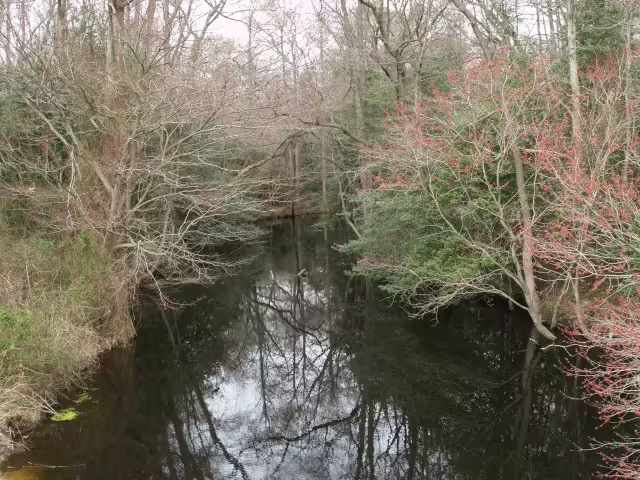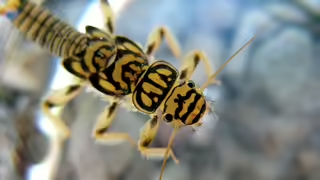A Unique Watershed Tea
The autumn season in eastern North America brings about the changing of leaves to brilliant colors, which then fall to the ground or a local stream. Many of these leaves stay near the plants to become soil and provide nutrients for the next season. However, some leaves go into creeks and streams, especially those in the headwaters, and become a powerhouse of energy and nutrients for many aquatic creatures. Each watershed has its own mix of plant species contributing to a unique “tea” made up of leachate from the leaves present in it. Some streams can have so much leachate that the stream actually looks like a dark tea, such as James Branch in Delaware.

Decomposition of Leaves
Organic molecules are leached out when the leaf first reaches the water and becomes waterlogged. Bacteria and fungi then decompose the leaves dissolving even more organic nutrients. This is similar to what happens in a mulch pile on land, except at a much faster rate. Once the leaf is partially decomposed macroinvertebrates such as mayfly, stonefly, and caddisfly larvae, and crustaceans further break the leaves down gaining their own nutrients. They are then food for larger organisms such as fish, amphibians, and some birds. Small detritus helps feed freshwater mussels and the fish provide habitat for the larval mussels. Large birds and mammals will then eat the fish. All of these interactions help form the aquatic ecosystem. The health of all of the various stages determines the overall health of the stream.

Types of Macroinvertebrates
Macroinvertebrates can be divided into several types depending on what they do in an aquatic ecosystem. These include:
- Shredders: Eat the dead leaves in a stream and include the larvae of stoneflies and caddisflies and sowbugs.
- Collectors: Eat the smaller organic particles and include mussels, the larvae of mayflies, and true flies.
- Filter feeders: Eat the particles in the water and include freshwater mussels.
- Browsers: Eat deposited material on the stream bottom and include snails, caddisflies, and beetles.
- Scrapers: algaes found on rocks such as diatoms.
- Predators: Eat other macroinvertebrates and include dragonflies, beetles, and crustaceans.
Leaves as Habitat
Packs of leaves also provide habitat. When the leaves reach an obstacle such as a fallen log or riffle, leaf packs will form. These leaf packs provide cover for macroinvertebrates and a source of more food. Differing habitats determine the species of macroinvertebrates that are present. These niches include shredders, collectors, miners, browsers, scrapers, and others.
Aquatic Ecosystems in Urban Areas
The information above describes a normal aquatic ecosystem. However, in urban areas, most people are encouraged to keep leaves out of the streams. While the leaves do clog storm drains and should be removed to prevent flooding, leaves in streams are good for providing a healthy habitat for downstream areas resulting in increased water quality and dissolved organic content.
The Watershed of McMullen House Bed & Breakfast
McMullen House Bed & Breakfast is in the Church Run watershed, which is a tributary to Oil Creek, a part of the larger Allegheny River watershed. Church Run flows through the middle and eastern parts of Titusville and in its lower sections, is highly urbanized and channelized. As such it does not receive much leaf litter and what does is often removed to prevent flooding. Oil Creek, into which Church Run flows, is a prized trout stream and relies on the nutrients not only coming in the creek but also its tributaries. Increasing the quality of the water coming from Church Run, helps the overall aquatic ecosystem in Oil Creek and the larger Allegheny River watershed. In addition, a healthy stream ecosystem helps mediate the effects of increased nutrient runoff from the upstream areas of Church Run.
You can help the health of your watershed
By planting native plant species you can provide food and habitat for pollinators and when the leaves fall in autumn, a source of energy and nutrients in your local stream. A selection of native plants suitable for butterflies and pollinators can be found at the McMullen House Bed & Breakfast Garden Shop. Also, be sure to book your stay at McMullen House Bed & Breakfast to see how you can plant a garden.